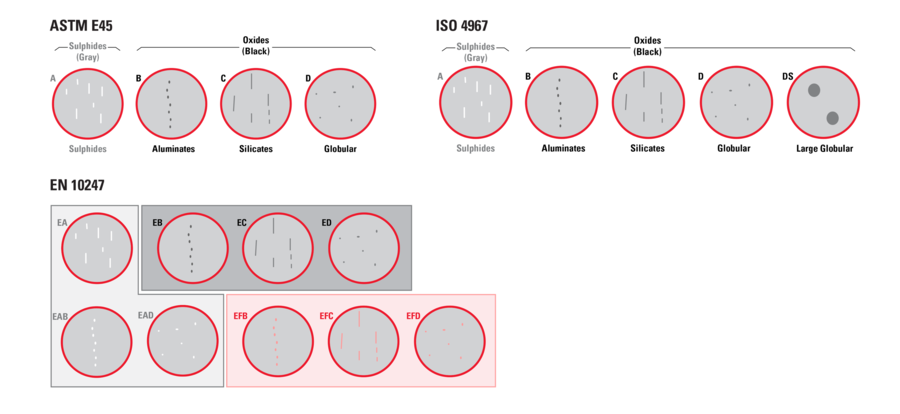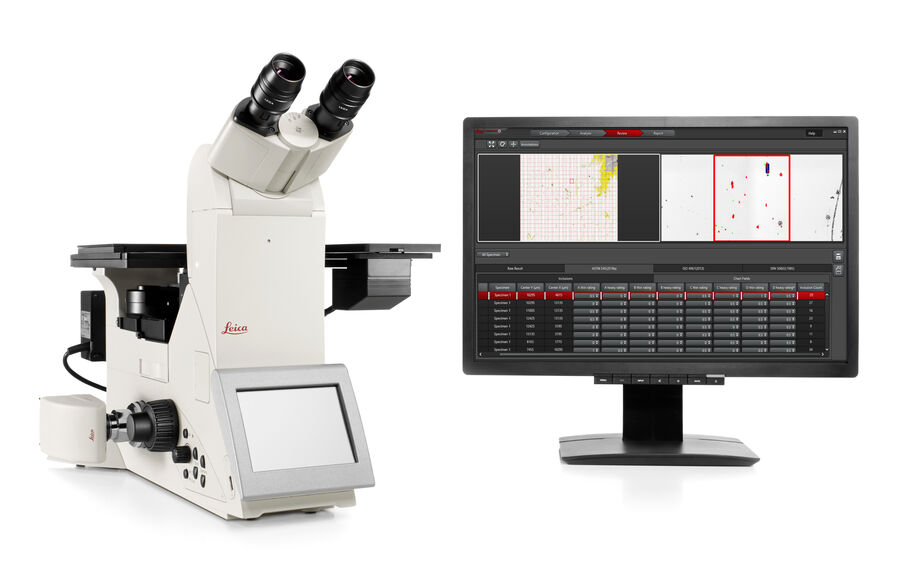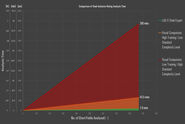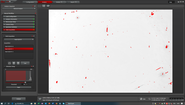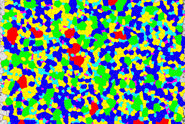Challenges with manual inclusion rating
When attempting to rate NMIs to determine steel quality in an efficient and cost-effective way for steel production and industry manufacturing, the following challenges can arise with manual rating solutions.
Manual rating of NMIs can be subjective and inconsistent throughout all work shifts of a company producing steel or components made with steel. The variability is due to significant differences between how users perform the manual rating. As judgement based on eyesight and visual comparison can vary significantly between individuals, it is one reason why a consistent manual analysis of images showing NMIs by multiple users can be difficult.
NMI proximity parameters, such as area required for inclusion grouping [2], may not be consistently defined or applied by different users doing manual rating. Applying definitions of “grouped” inclusions in a consistent manner can be also very difficult.
Estimating the area, size, or inclination of NMIs can be also a challenge [3]. This difficulty arises because:
- There are often a large variety of NMI shapes and
- Measuring the true length of slightly inclined NMIs with only an overhead microscope view of NMIs visible on the steel surface can be troublesome
The analysis time for the manual NMI rating of a sample is often longer than what is considered acceptable for most steel producers and component manufacturers. Applying standard rating methods, like the ASTM E45 field-based evaluation [2,3,5,6], using a manual rating solution can be very time consuming.
Applying different international, regional, or organizational standards for steel quality when doing manual NMI rating can be quite challenging as well [5]. Similar to what has been mentioned above, changes to standard parameters, such as the definitions of inclusion roundness and grouping [2], can also make manual classification of inclusions confusing for users [3].
Overcoming the challenges: automated NMI rating solution
The Steel Quality Solution Suite from Leica Microsystems, utilizing the LAS X Steel Expert software, offers automated NMI rating solutions which overcomes the challenges of manual rating. The result is a rapid, flexible, and reliable way to determine steel quality [2].


